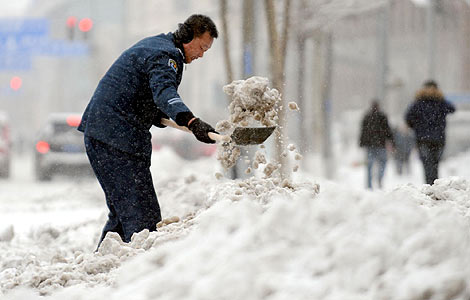
LANZHOU - Herdsmen living on the remote Zhuaxixiulong grassland in Northwest China's Gansu province used to depend on luck when it came to the survival of their newborns. But now, they can count on doctors.
The township hospital in Zhuaxixiulong, located in Tianzhu Tibetan autonomous county, has seen 31 expectant and new mothers this year, with all the newborns receiving a clean bill of health, said Li Yu, the hospital's deputy head.
According to Li, every pregnant woman admitted to the hospital is given five physical examinations before delivery, as well as regular checkups for both her and her infant for the following three months.
The services were absent 12 years ago, when many expectant mothers refused to give birth in hospitals due to their inconvenient location, poor economic conditions and tradition of giving birth at home, Li said.
"When they felt the baby was coming out, they sought help from 'experienced' elderly women in the village. But as a result of improperly conducted births, many babies contracted pneumonia right after birth and died before their fifth birthday," Li said.
But conditions have changed since then, with hospital births becoming the norm, helping to slash infant mortality rates.
"More than 1,500 babies are born in our county each year, and 99 percent of pregnant women elect to give birth in hospitals," said Jia Sandan, director of the county's maternal and child health center.
The shift is part of the government's decade-long efforts to promote hospital deliveries and improve health care for newborns in rural areas.
According to statistics from the Ministry of Health, the mortality rate for children under the age of five dove from 61 deaths per 1,000 births in 1991 to 15.6 deaths per 1,000 births in 2011. The government has set a target of reducing the ratio to less than 13 deaths by 2020.
However, the infant mortality rate in rural areas is nearly three times that of urban areas, with premature births, pneumonia, congenital heart disease and accidental asphyxia claiming many children.
To narrow the yawning urban-rural gap, the central government launched a campaign to promote hospital births in central and western rural areas in 2000, expanding it nationwide in 2009. The campaign provides a subsidy of 400 yuan ($62.92) for women who choose to give birth in hospitals.
From 2009 to 2011, the central government poured 7.9 billion yuan into the program, raising the country's rural hospital birth rate to 96.7 percent from 92.3 percent in 2008.
"With the extra funding for hospital births given by the local government, an expectant mother in our county can receive a total of 880 yuan in subsidies, which is just about enough to cover delivery expenses," Jia said.
The government has also made more efforts over the last decade to strengthen medical facilities and train professional obstetricians.
"I, a man, used to be the only obstetrician in our hospital. I guess that could partly explain why women felt reluctant to give birth here. They were embarrassed. But now, they can choose different doctors," said Li.
He said each village in Zhuaxixiulong now has a clinic staffed by community-level doctors who are capable of treating minor children's diseases.
"Children's health insurance can cover 85 percent of the bill, and the treatment can be free if the parents choose traditional Chinese or Tibetan therapies," he added.
The infant mortality rate in Tianzhu is far greater than the provincial average, which some have attributed to a lack of skilled medical personnel in remote rural areas.
Wang Tingjun, a health official in neighboring Qinghai province, said his province should have about 4,000 health care professionals, but only has 754.
"A major headache for us is training medical workers at village level, most of whom are more than 60 years old," said Chai Guangde, head of the township hospital in Lanlongkou, Qinghai.
Village clinics in the town are equipped with computers, but the elderly medical workers cannot use them, Chai said.
"The training has seen little progress. I think we need more young workers," Chai said.
The government has vowed to create a fundamental health care system for mothers and children in both urban and rural areas by 2020, providing them with equal access to basic health care services.







